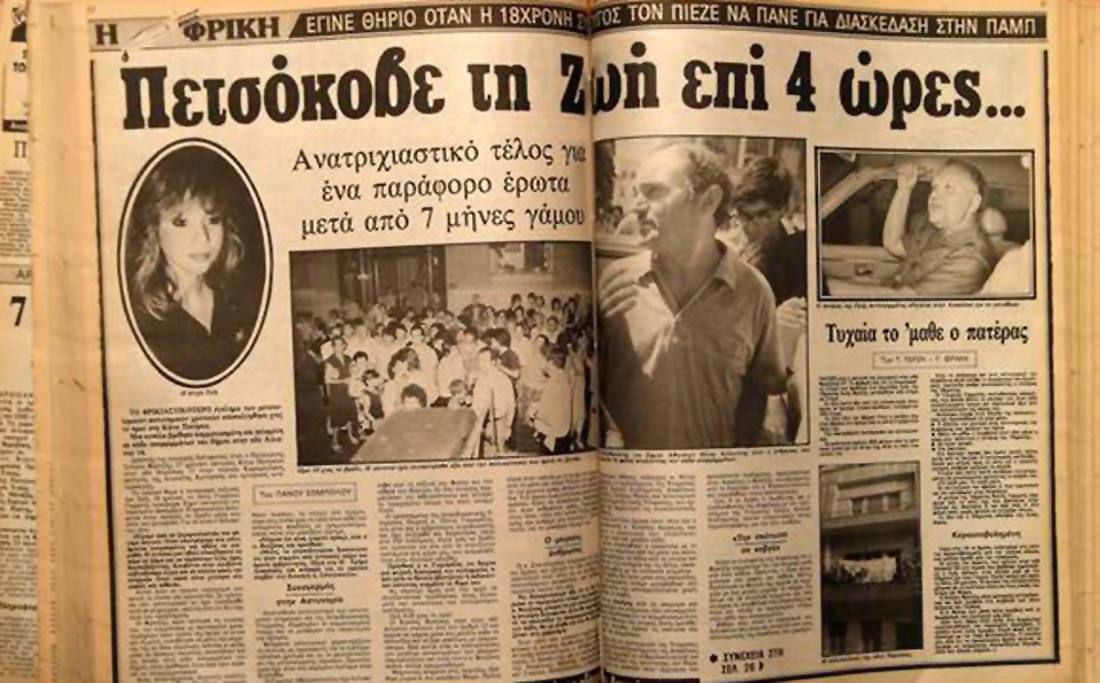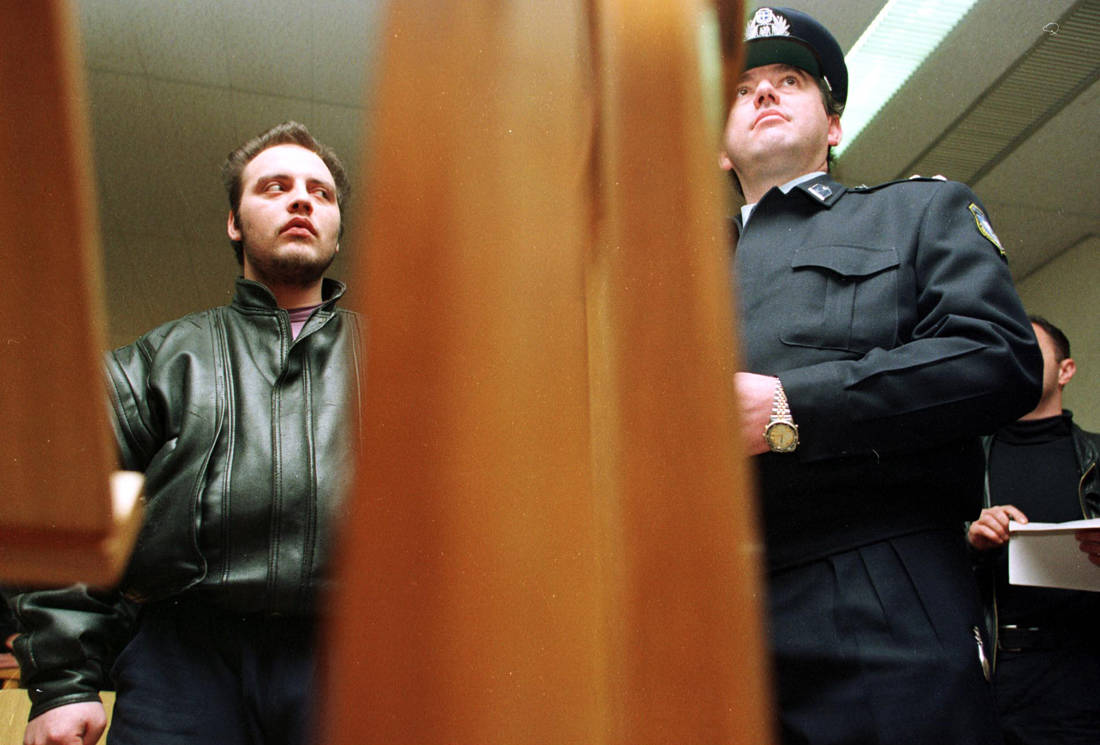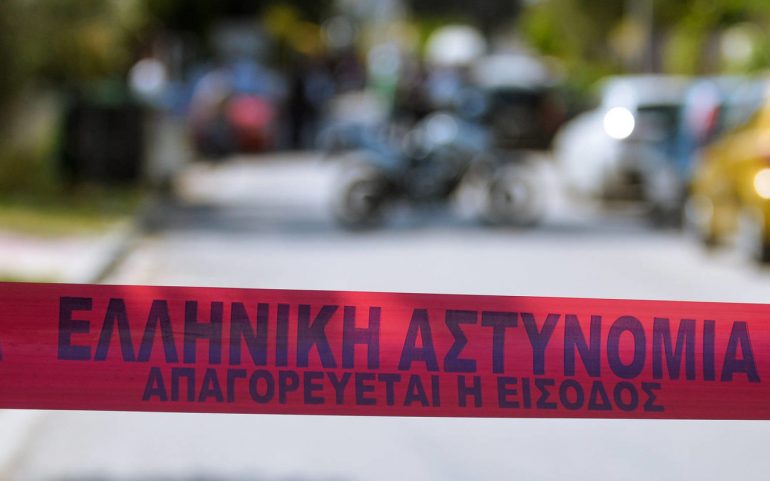Horrific crimes that shocked the public, that aroused the interest of the people and monopolized the media.
Enigmatic perpetrators who painted their hands with blood, spread death around them and marked the Greek criminological chronicles.
Newsbeast.gr opens the time warp of history and retrieves three cases that shocked the nation.
Panagiotis Frantzis who killed and butchered his wife, Antonis Daglis who went down in history as the "rebel of Athens" and the murderer Manolis Douris.
Case of Panagiotis Frantzis

It was June 24, 1987 when a 50-year-old man was found in front of a macabre find in a trash can in Kato Patisia.
Among rubbish and leftovers he discovered bags with human limbs. At first he could not realize what was happening, while as he had testified to the police, he thought it was animal meat.
Shocked by his macabre discovery, he informed the police, who immediately went to the spot, thus starting the countdown, in order to reveal one of the hardest crimes in Greek chronicles.
The broken corpse was in such a state that according to the police officers who had taken over the case it was difficult to even identify.
The media of the time were constantly broadcasting the news while the people were watching the developments in shock.
The solution to the mystery of who the dead woman was, would be given in the afternoon of the same day by the then 27-year-old student of the Commercial Department Panagiotis Frantzis at GADA where he confessed that he killed his wife 18-year-old Zoe Garmani.
"It was an accident, I loved her," he told security police as he blamed his actions on the confusion following a heated argument.
However as her motivation murder Franzis's pathological jealousy for his young wife had been attributed.
According to the police investigations, Panagiotis Frantzis, after killing his wife, dismembered her and put her limbs in ten garbage bags, which he then placed in four other bags before throwing them in the trash.
The 27-year-old student was sentenced to life, served 18 years and in 2005 was released from prison.
The case of Antonis Daglis

He went down in history as the "orthodoxy of Athens" and as "their murderer prostitutes».
"I saw my mother in the face of prostitutes. "I thought I was going to kill her," he told police when he was arrested on January 21, 1996.
Daglis Dalikeris by profession, had become the fear and terror in the squares of prostitutes in Athens.
The son of a prostitute, he too had shocked the whole of Greece by killing three women, while according to the interrogation he had tried to kill at least five others.
His first victim was a 29-year-old prostitute, whom he had since strangle, had cut her nipples, while according to reports at the time, had removed her viscera.
Police officers and a medical examiner who had seen the lifeless body of the woman were shocked by the barbarity of the crime, while the media constantly "played" the news by talking about a "free maniac killer" in Athens.
His second victim was again a 26-year-old prostitute. Her lifeless body had been found by passers-by at the Botanical Garden while she was also strangled.
The third and last victim of the "murderer of prostitutes" was a prostitute and she, whom he had confessed to having killed in 1992, had been cut to pieces and thrown to pieces.
The police had reached the location and finally arrested him after testimonies that murderer he circulated in the hangouts of prostitutes with a white van, which he had shaped internally to have intercourse with prostitutes.
During his much-publicized trial, the then 22-year-old Daglis had claimed that when he went to have sex with prostitutes, images came to his mind while he heard voices telling him to kill them.
He was sentenced to life in prison and transferred to Korydallos prison, where in 1997 he was found hanged in his cell.
The case of Manolis Douris

He went down in history as one of the most heinous murders in the history of Greece and shocked the nation as a father raped and then killed his 6-year-old son.
It all happened in Ermioni on New Year's Eve 1993, when the youngest son of the family, 6-year-old Nikos, disappeared.
Ο Manolis Douris he and his wife alerted the police and the search for the little boy began immediately.
The news of the disappearance was spread through the media. and the whole of Greece identified with the parents and especially Manolis Douris, who appeared inconsolable in front of the cameras asking for help from anyone who knew something while swearing revenge.
A short time later, the 6-year-old boy was found dead and somewhere there the countdown began for Manolis Douris, who was considered a suspect by the authorities.
The drama that the aching father "sold" on the TV channels, had not convinced the experienced police officers who were investigating the case, while in a series of testimonies that he had given, he fell into contradictions.
According to the forensic report, little Nikos had died of suffocation while he had been sexually abused. Manolis Douris "broke" and confessed his act. He had rape and had killed his little angel.
"I have a rare disease, it transforms me. I was having seizures and I could not see in front of me. "Everyone in my position could have done the same," he told police.
The sympathy that the people nurtured turned into rage and everyone demanded his exemplary punishment. In the trial that followed, he was sentenced to life in prison for premeditated murder.
He was to be transferred to the prisons of Trikala but was deemed undesirable by the inmates of the prison.
Eventually, he was taken to Corfu prison in a specially designed area away from the other detainees. There, too, he was deemed unwanted and taken to other penitentiaries.
Two years after the rape and murder of his gut, he ended his life in his cell. He was hanged with the TV cable.
